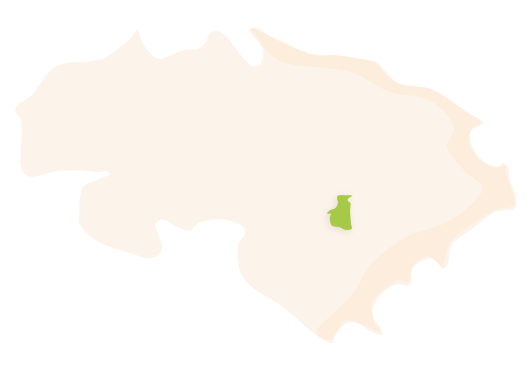Senija is a municipality which is part of the valley known as La Vall de Pop, located in the southeastern inland area of the region, at an altitude of 234 metres above sea level. It has an area of 4.8 km² and 605 inhabitants, who are known locally as Senigers and Senigeres.
 Senija's municipal district. Surface area: 4.8 km². Population: 605 (INE data 2021).
Senija's municipal district. Surface area: 4.8 km². Population: 605 (INE data 2021).HISTORY
The history of the village of Senija, like many of those located in La Vall de Pop, begins with the arrival of the Arabs. The name Sinhadga is of Arab origin and was a settlement created by a Berber tribe that was established on the mountain plain where the village of Senija is located today.
Like other settlements that belonged to the old Crown of Aragon, it was conquered by King Jaume I around May 11th, 1244, and on May 13th of the year 1258 it was handed over to Pere Arlandis Cortés, together with the baronies of Benissa, Murla and Parcent.
On June 12th, 1430, Joan I of Navarre and II of Aragon sold the barony of Senija to Francesc Cornet, separating it from Benissa and Calp. It is on this date that Senija became an independent barony whose ownership, during various centuries, passed from one important Valencian family to another.
Until 1535, it was an annex of the parish of Benissa. Not much information has been found about its town charter after the expulsion of the Moors, but what is known is that in 1622 it had a population of 33 Christian families. This was a significantly lower number than the population of the village during the last years of the Moorish period, which indicates that the demographic consequences had seriously affected the municipality.
In the 17th century, Senija belonged to the Zapata family, who were knights and merchants. It then passed over to the Bou de Peñarroya family and, afterwards, to the Escrivà family. By 1794, there were 121 families in the village, who were mainly engaged in the production of raisins and grapes for export.
The crisis caused by the grape phylloxera brought about a great emigration flux, with many people having to travel far from the village so as to find an income. These were the so-called blavets de La Marina, the Senigers and Benissers who did seasonal work harvesting rice around La Ribera del Xúquer.
Senija offers many attractions that must absolutely be visited, such as the MOS (Open Air Museum of Senija), which is one of the most noteworthy efforts made by the town hall in order to give a boost to cultural tourism.
FESTIVITIES
- The festivities of the neighbourhood known as La Cometa are celebrated during the first weekend of August.
- On the 14th and 15th of August: Festes de L'Asunción.
- Senija's patron saint festivities are celebrated during the first weekend of May, in honour of La Mare de Déu dels Desemparats and Santa Catalina Màrtir.
GASTRONOMY
- The cake known as coca de molletes.
- The savoury pastries known as coques amb mullador de pelleta.
- Arròs de batre, traditionally made during the threshing period.
- Arròs amb fava pelà (rice with broad beans).
- The tuna tripe dish called mullador de bull.
- The gastronomic event known as Ruta de La Pilota d'Olla.